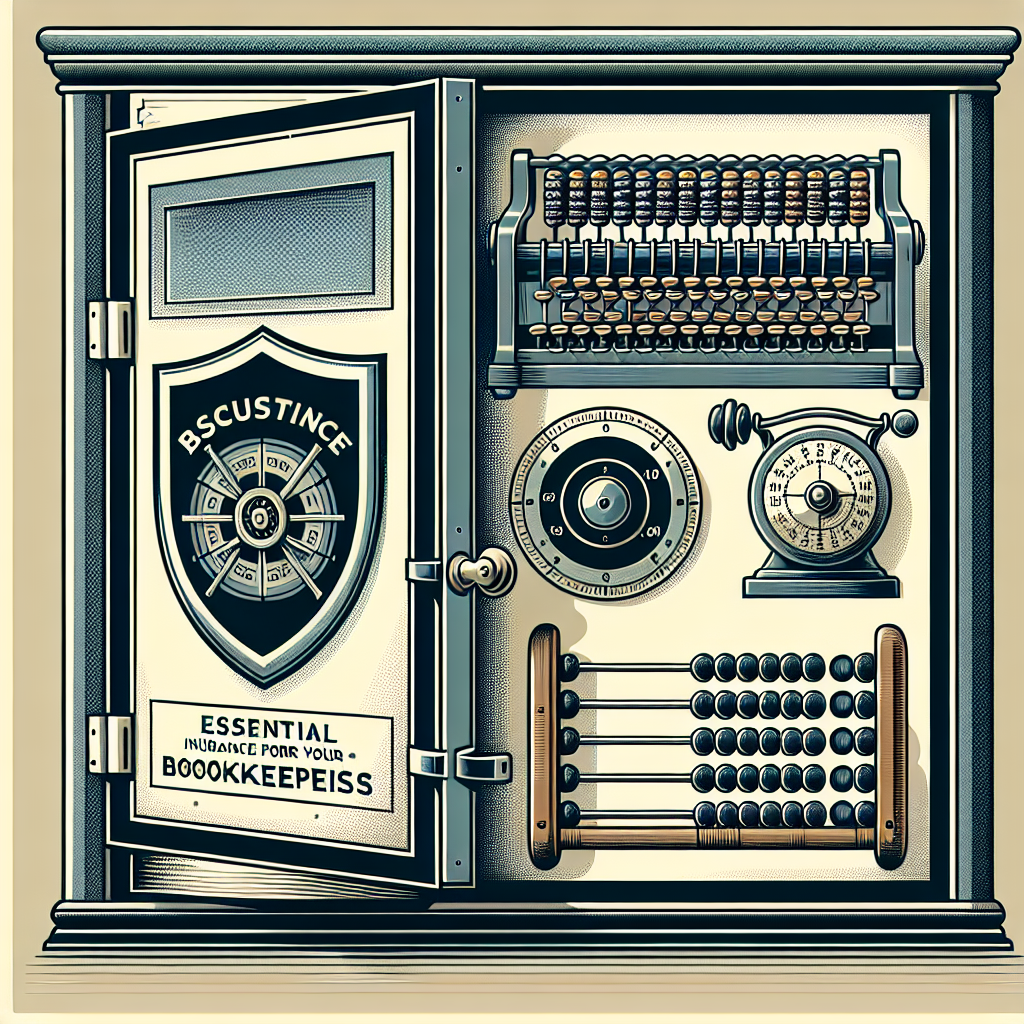Filed under Home Insurance on
Home Insurance Coverage Definitions Explained

Insurance policies are full of precise terms that can make or break a claim. If you understand what those words mean before you ever file, you stand a much better chance of getting the coverage you expect. Consider this your guide, Home Insurance Coverage Definitions Explained, written to translate policy language into plain English so you can protect your home with confidence.
Home Insurance Coverage Definitions Explained: The Basics
Every homeowners policy follows a similar structure. It opens with a declarations page that lists who and what is insured, the address, coverage limits, deductibles, and endorsements. Then the policy form spells out definitions, the insuring agreement (what is covered), conditions (your duties and the insurer’s), exclusions (what is not covered), and any amendments.
Definitions are not filler; they are the rules of the road. When the policy defines a word, that definition overrides everyday meaning. For example, bodily injury might exclude emotional distress unless accompanied by physical harm, and collapse often has a specific, narrow definition that excludes sagging or settling. Knowing where these definitions live and how they operate clarifies what events are covered and how a claim will be paid.
Core Coverages, Decoded
Dwelling Coverage (Coverage A)
This covers the main structure of your home and anything attached, like an attached garage or deck. Insurers recommend setting the limit at the full cost to rebuild the home with similar materials and workmanship, not the real estate market value. Rebuilding cost depends on labor, materials, square footage, and unique features such as custom millwork or stone.
Key definition: replacement cost versus actual cash value. Some policies default to replacement cost on the dwelling, while others limit roof surfaces to actual cash value based on age. That difference can be thousands of dollars if a hailstorm damages an older roof.
Other Structures (Coverage B)
Detached garages, fences, sheds, and gazebos fall under this coverage, usually set at 10 percent of Coverage A by default. If you have extensive fencing, a pool house, or a large detached workshop, raise the limit or schedule these structures to avoid a shortfall.
Personal Property (Coverage C)
Your furniture, electronics, clothing, and kitchenware travel under this umbrella. On most policies, personal property is protected anywhere in the world, but with some limitations. Standard forms cover named perils unless upgraded to special or open-peril coverage.
Watch the definition of special limits. Jewelry, watches, and furs might cap at $1,500 for theft losses, firearms at $2,500, and cash at $200. High-value items need a scheduled personal property endorsement with a recent appraisal for full coverage and lower or zero deductibles.
Loss of Use or Additional Living Expense (Coverage D)
When a covered loss makes your home uninhabitable, this pays the additional costs to maintain your normal standard of living. Think hotel stays, short-term rentals, additional food and laundry expenses, parking, pet boarding, and storage. It does not pay your normal mortgage or utilities; it pays the extra you incur because you cannot live at home. Policies may cap this at 20 to 30 percent of Coverage A or limit it by a time period, commonly 12 to 24 months.
Personal Liability (Coverage E)
Liability coverage steps in when you are legally responsible for bodily injury or property damage to others. A visitor slips on your icy steps, your child’s errant baseball breaks a neighbor’s window, or your dog bites a passerby. Typical limits start at $100,000 but many homeowners choose $300,000 to $500,000. Intentional acts, business activities, and auto-related incidents are usually excluded and require other policies.
Medical Payments to Others (Coverage F)
This no-fault coverage pays for minor medical bills if someone is hurt on your property, whether you are liable or not. Think of a neighbor’s cut finger from a backyard barbecue mishap. Limits are modest, often $1,000 to $5,000, and designed to defuse small incidents before they escalate.
Policy Forms and Perils, Simplified
Homeowners insurance comes in standard forms that define what perils are covered and how broadly. The most common for owner-occupied homes is the HO-3, which typically covers the dwelling on an open-peril basis (everything except what’s excluded) and personal property on a named-peril basis. The HO-5 broadens that to open-peril coverage for both dwelling and personal property, often with fewer sublimits and more generous terms.
Named Perils
These list exactly what events trigger coverage, such as fire, smoke, theft, vandalism, windstorm, hail, explosion, weight of ice and snow, sudden and accidental discharge of water, freezing of plumbing, and volcanic eruption. If the peril is not named, it is not covered.
Open Perils
Also called special form, this covers all causes of loss except those specifically excluded. Common exclusions include flood, earth movement, neglect, wear and tear, insects or vermin, and mechanical breakdown. Open-peril policies shift the burden to the insurer to prove an exclusion applies.
Other Forms
HO-4 for renters and HO-6 for condos adapt these ideas for tenant belongings and interior condo finishes. Manufactured homes use HO-7 variants, and HO-8 may fit older or historic homes where actual cash value settlements are expected due to unique construction.
When people search for Home Insurance Coverage Definitions Explained, they often want clarity on this named versus open-peril distinction because it dictates how often the answer to “is this covered?” begins with yes or no.
Definitions That Change Outcomes
Replacement Cost vs Actual Cash Value
Replacement cost pays the cost to repair or replace with new materials of like kind and quality, without deduction for depreciation. Actual cash value equals replacement cost minus depreciation. A seven-year-old roof may be depreciated 40 to 60 percent depending on material and condition. Many insurers pay ACV up front and release the depreciation once repairs are completed and documented. For personal property, replacement cost coverage is optional on some policies and well worth the small added premium.
Deductibles
Deductibles can be a flat dollar amount or a percentage of Coverage A. Percentage deductibles are common for wind, hail, named storm, or hurricane losses, especially in coastal and tornado-prone regions. A 2 percent deductible on a $400,000 home equals $8,000 out of pocket for a covered wind claim, so choose carefully. Some policies assign separate, higher deductibles for wind and hail while keeping a lower deductible for all other perils.
Special Limits and Sublimits
Policies impose dollar caps on specific categories to control fraud and concentration of value. Typical theft limits include:
- Jewelry, watches, and furs: $1,500
- Firearms and related equipment: $2,500
- Silverware and goldware: $2,500
- Cash, coins, and precious metals: $200 to $500
- Business property: $2,500 at home, $500 off premises
These vary by insurer and state. If the caps do not match your lifestyle, add endorsements or a separate personal articles policy.
Occurrence
Homeowners policies are occurrence-based, meaning the coverage in force at the time of the loss responds, even if the claim is reported later. The policy defines occurrence to include repeated exposure to substantially the same harmful conditions, which matters for claims like long-term smoke exposure or a recurring nuisance. However, many water damage definitions specifically exclude continuous or repeated leakage over weeks or months, so timing and discovery dates matter.
Water Damage Vocabulary
Few areas trip up homeowners more than water losses. Key distinctions include:
- Sudden and accidental: A burst supply line or blown hose behind the washing machine. Typically covered.
- Seepage or leakage: Continuous or repeated leaks over 14 days or more. Commonly excluded unless specifically endorsed.
- Backup of sewer or drain: Water reversing course from sewers or sump systems into your home. Usually excluded but can be added with an endorsement and limit.
- Overflow: Water spilling over from within a plumbing or heating system due to blockage or failure. Often covered if sudden and accidental.
- Flood: Surface water, storm surge, or mudflow from outside. Excluded on homeowners policies; consider a separate flood policy.
Ordinance or Law
Building codes evolve. When you rebuild after a covered loss, code upgrades can add significant cost. Ordinance or law coverage pays for those upgrades, typically 10 to 25 percent of Coverage A by endorsement. Without it, you might be responsible for expenses like hard-wiring smoke detectors or upgrading electrical panels to current code.
Extended and Guaranteed Replacement Cost
Extended replacement cost increases your Coverage A limit by 10 to 50 percent if costs exceed your base limit due to inflation or demand surge after a catastrophe. Guaranteed replacement cost, offered by fewer carriers, removes the cap entirely, subject to policy conditions. Both are powerful protections against underinsurance, especially as construction costs have outpaced general inflation in many regions since 2020.
Endorsements That Fill Gaps
Even robust HO-5 policies leave gaps. Below you will find Home Insurance Coverage Definitions Explained in the context of common endorsements that customize your protection.
Scheduled Personal Property
List high-value items individually with agreed values and broader perils, including mysterious disappearance in many cases. Appraisals, photos, and serial numbers help establish documentation and speed claim payment.
Water Backup
Adds coverage for water that backs up through sewers or drains or overflows from a sump. Limits often range from $5,000 to $25,000. If your home has a finished basement or is in an older neighborhood with combined sewer lines, this is a prudent add-on.
Equipment Breakdown or Home Systems Protection
Covers sudden and accidental mechanical or electrical breakdown of HVAC systems, boilers, built-in appliances, and smart home electronics. It is not a home warranty, but it can pay for repairs and even spoilage from refrigerator failures.
Service Line Coverage
Pays to repair or replace underground piping and wiring from the street to your home, such as water, sewer, electrical, and data lines, often including excavation and landscaping. Many homeowners are surprised to learn they are responsible for these lines on their property.
Cyber and Identity Theft
Provides reimbursement for expenses tied to identity restoration, cyberbullying, or certain online frauds. As connected devices proliferate, some insurers also offer coverage for cyberattacks on smart thermostats or security systems.
Home Business and Short-Term Rental
If you run a business from home or occasionally host short-term renters, standard policies may exclude related liability and property losses. Specialized endorsements or separate policies can close these gaps and align coverage to your side hustle or hosting activity.
Claims Language You Will See
In the spirit of Home Insurance Coverage Definitions Explained, understanding claims terminology helps you navigate the process calmly and confidently.
Duties After Loss
Policies require you to mitigate further damage, notify the insurer promptly, document the loss, provide a sworn proof of loss if requested, and cooperate with inspections and recorded statements. Failure to comply can complicate or reduce claim payments.
Appraisal Clause
When you and the insurer disagree on the amount of loss but not whether the loss is covered, appraisal offers a dispute-resolution path. Each party selects a competent appraiser, and the two appraisers select an umpire. A decision agreed upon by any two of the three sets the amount of loss. Appraisal is not the same as arbitration and generally focuses on pricing and scope, not coverage interpretation.
Subrogation
If another party is responsible for your loss, your insurer may pursue them to recover what it paid. For example, after a dishwasher supply line fails, the insurer might seek reimbursement from the manufacturer or installer. You have a duty not to impair the insurer’s recovery rights, which includes preserving defective parts.
Proof of Loss
A sworn statement detailing the amount of your claim, often required for larger or complex losses. Complete, accurate documentation speeds settlement. Keep receipts, invoices, photos, and serial numbers, and consider a digital home inventory.
Recoverable Depreciation
Many property claims pay in two stages: actual cash value initially, then the recoverable depreciation after repairs are completed. Deadlines apply, commonly 180 days to a year, though extensions can be granted. Ask your adjuster to clarify the timeline and what paperwork releases the final payment.
Matching and Line of Sight
Policies vary on whether they must match undamaged materials to new materials in appearance. Some states and policies require reasonable matching, while others do not. If a new shingle color does not match the adjacent roof planes, your outcome will hinge on your policy language and local regulations.
Pricing, Underwriting, and Market Trends
Why do premiums rise even when you do not file a claim? Insurers price risk using historical loss data, climate models, building cost indices, and reinsurance costs. The Insurance Information Institute has reported elevated catastrophe losses across wildfire, hurricane, convective storms, and freeze events over the past few years, alongside double-digit increases in construction costs since 2020. Those pressures flow into base rates, deductibles, and underwriting guidelines.
What Affects Your Rate
- Roof age and material: New, impact-resistant roofs can earn sizable discounts; older roofs may trigger higher deductibles or ACV settlements.
- Plumbing and electrical: Updated copper or PEX plumbing and modern breaker panels reduce water and fire risk.
- Location analytics: Fire protection class, distance to a hydrant, wildfire score, and hail frequency all matter.
- Claims history: Multiple losses in three to five years can increase premiums or lead to nonrenewal.
- Protective devices: Monitored alarms, water leak sensors, shutoff valves, and whole-house surge protectors can lower risk and sometimes secure discounts.
- Credit-based insurance scores: Where permitted by state law, these correlate with loss frequency and can impact pricing.
Market Shifts to Watch
- Higher wind and hail deductibles: Many carriers now separate wind deductibles, particularly in the Plains and Southeast.
- Roof settlement changes: Some policies default to ACV on older roofs unless you buy back replacement cost.
- Reduced appetite in catastrophe zones: Insurers limit new business or raise minimum deductibles in wildfire and hurricane-exposed areas.
- Increased use of aerial imagery and smart data: Carriers validate roof condition and property features without a physical inspection.
How to Compare Policies the Smart Way
Side-by-side comparisons work only when you line up definitions and endorsements, not just the price. Use this Home Insurance Coverage Definitions Explained checklist to make an apples-to-apples decision.
Steps to a Clear Comparison
- Gather the declarations pages for each quote. Note Coverage A through F limits, deductibles, and endorsements.
- Ask for the full policy form and endorsement list. Confirm whether personal property is named-peril or open-peril and whether roof surfaces are ACV or replacement cost.
- Check sublimits for jewelry, firearms, collectibles, and business property. Add schedules if needed.
- Review water coverage. Do you have water backup, service line, and any seepage limitations?
- Confirm ordinance or law, extended replacement cost, and inflation guard percentages.
- Assess liability needs. Consider an umbrella policy if you have significant assets or higher risk exposures.
- Evaluate claim service. Ask about 24/7 reporting, local adjusters, and contractors in the preferred network.
Common Mistakes to Avoid
- Insuring for market value instead of rebuild cost, leading to underinsurance.
- Ignoring separate wind, hail, or hurricane deductibles, which can be large.
- Assuming flood is covered; it is not on standard homeowners policies.
- Overlooking aging systems that drive loss potential and surcharges.
- Skipping documentation of valuables, which slows claims and caps payments.
Quick-Reference Glossary
- Declarations Page: The policy snapshot showing coverages, limits, and endorsements.
- Insuring Agreement: The promise to pay covered losses, subject to terms.
- Exclusion: A cause or item not covered by the policy.
- Endorsement: A policy add-on that changes terms, adds coverage, or adjusts limits.
- Replacement Cost: Payment basis without deduction for depreciation.
- Actual Cash Value: Replacement cost minus depreciation.
- Occurrence: An accident, including repeated exposure, resulting in damage.
- Additional Living Expense: Extra costs you incur when your home is uninhabitable.
- Sublimit: A smaller limit within a larger coverage limit for specific items.
- Ordinance or Law: Coverage for building code upgrades after a covered loss.
- Water Backup: Coverage for water that backs up through sewers or drains.
- Subrogation: The insurer’s right to recover claim costs from a responsible party.
Frequently Asked Questions
Is mold damage covered?
Usually only if it results from a covered water loss and you act promptly to mitigate damage. Many policies cap mold remediation at a small sublimit unless you buy an endorsement that expands coverage.
What about my home office equipment?
Business property at home typically carries a low sublimit. If you keep expensive equipment or inventory on site, add a business property endorsement or consider an in-home business policy to increase limits and include business liability.
Are my solar panels covered?
Panels permanently attached to the dwelling are generally covered under the dwelling limit, but some insurers add unique valuation or wind/hail provisions. Confirm how your policy values panels and whether a separate deductible applies.
Do I need an umbrella policy?
If your net worth or future earnings exceed your liability limit, an umbrella policy adds $1 million or more of extra liability protection over your home and auto policies. It is typically affordable and can be critical in severe injury claims.
How often should I review my coverage?
Annually, and after renovations, roof replacement, major purchases, or changes in occupancy. Construction costs, personal property values, and life changes can outpace your last renewal.
Putting It All Together
You do not need to memorize every clause to be protected, but you should understand the handful of definitions that drive claim outcomes: how your roof is valued, which water losses are covered, what your deductibles are, and where sublimits apply. Keep receipts and an inventory, adopt simple risk controls like water sensors and surge protectors, and choose endorsements that match how you live.
If you remember one thing from Home Insurance Coverage Definitions Explained, let it be this: words in your policy are dollars at claim time. Read them, ask questions, and align your coverage to your real-world risks. That way, the next time life gets unpredictable, your insurance will feel simple, fair, and ready to respond.
As the market evolves, revisit your policy every year. Ask your agent about trends affecting your area, like hail frequency, wildfire risk, or rising water losses, and calibrate deductibles and limits accordingly. With Home Insurance Coverage Definitions Explained as your roadmap, you can move from guesswork to informed decisions.
Before you sign at renewal, take 15 minutes with your declarations page and cross-check the big five: Coverage A amount, roof settlement basis, water endorsements, ordinance or law percentage, and liability limit. That short review, fueled by the insights in Home Insurance Coverage Definitions Explained, can save you frustration later and ensure your insurance keeps pace with your life.




